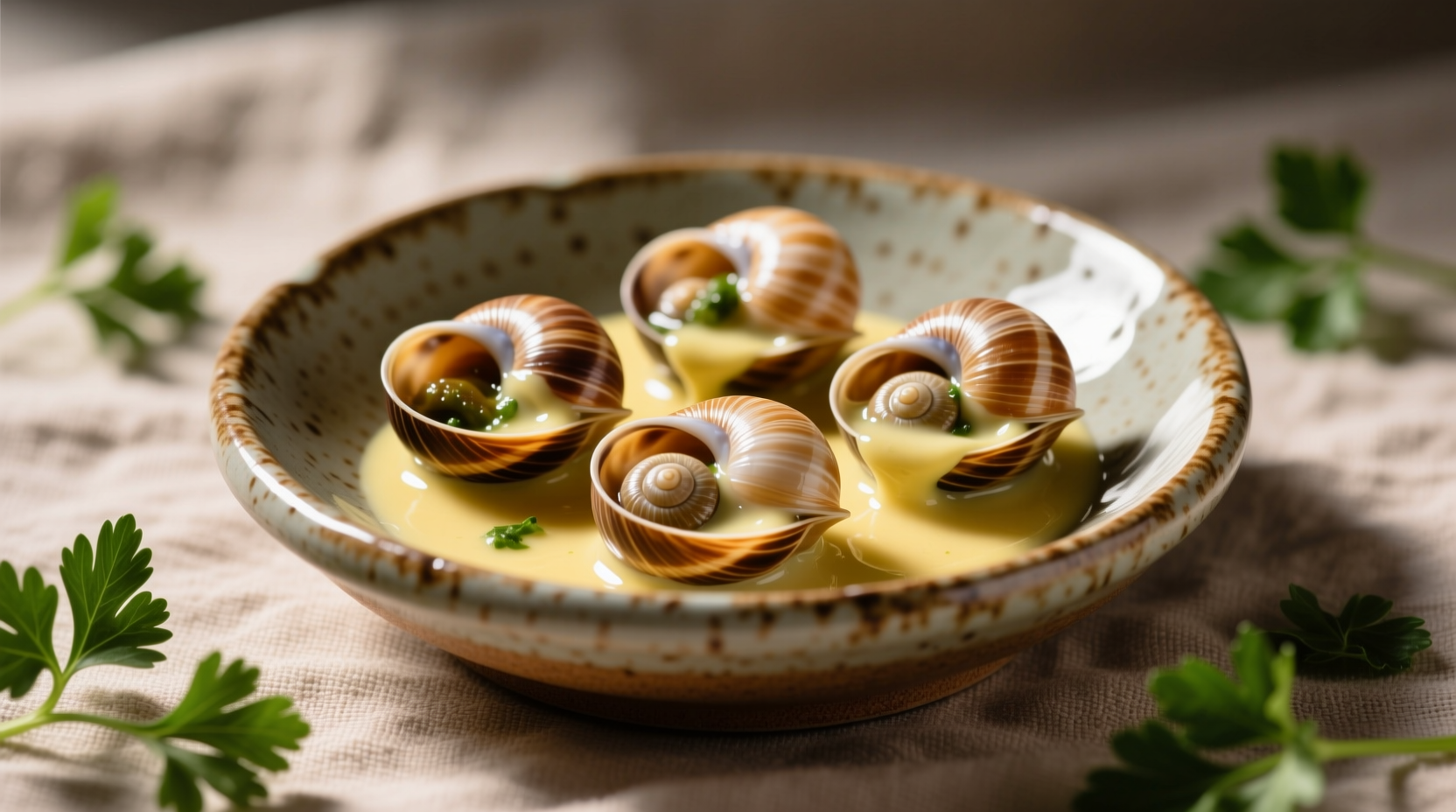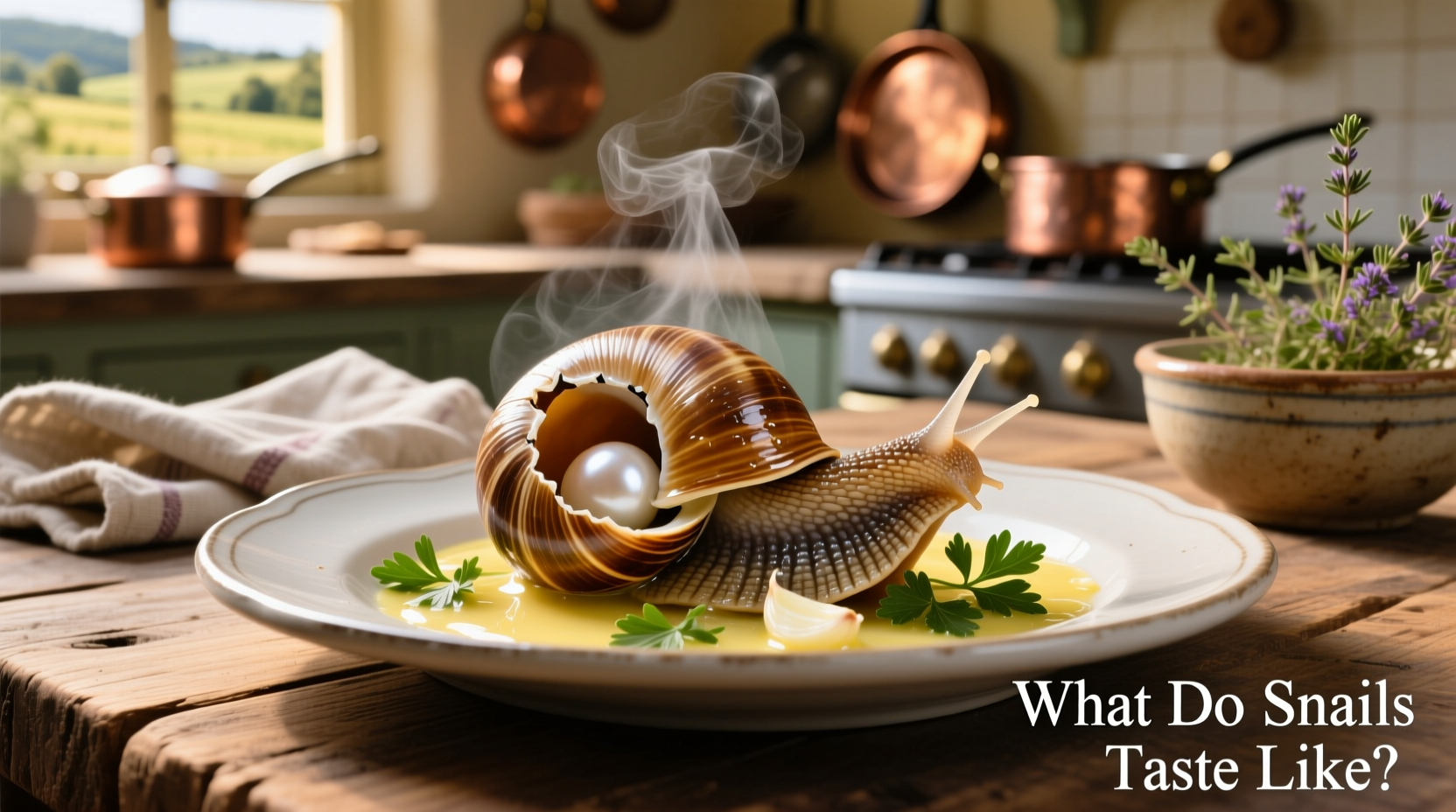Curious about the culinary experience of eating snails? You're not alone. Many people wonder what these gastropods actually taste like before trying them for the first time. As a French-trained chef with expertise in European spice traditions, I've worked extensively with escargot and can provide an accurate description of their flavor profile based on decades of culinary experience.
Understanding Snail Flavor Profile
When properly prepared, snails offer a unique culinary experience that surprises many first-time eaters. The meat itself has a mild, slightly earthy flavor that's often compared to chicken or mushrooms, but with its own distinctive character. The texture is what most people notice first - tender yet slightly chewy, similar to calamari but less rubbery.
"Snails don't have a strong inherent flavor," explains Sophie Dubois, a French culinary expert specializing in European spice traditions. "This makes them excellent carriers for sauces and seasonings, which is why garlic-parsley butter has become the classic preparation. The snail absorbs these flavors while contributing its own subtle earthiness."

How Preparation Methods Transform Flavor
The way snails are prepared dramatically affects their final taste. Unlike many proteins, snails readily absorb surrounding flavors, making preparation techniques crucial to the eating experience.
| Preparation Method | Flavor Profile | Texture | Common Regional Use |
|---|---|---|---|
| Classic French (garlic-parsley butter) | Rich, aromatic, with herbaceous notes | Tender, slightly chewy | France, international fine dining |
| Spanish (alioli sauce) | Garlicky with subtle lemon notes | Firm yet yielding | Spain, particularly Catalonia |
| Portuguese (tomato and wine) | Bright acidity with herbal complexity | More pronounced chew | Portugal, especially Alentejo region |
| Plain boiled | Mild earthiness, subtle mushroom notes | Firm, slightly rubbery | Rarely served this way commercially |
Historical Context of Snail Consumption
Snails have been part of human diets for thousands of years, with archaeological evidence showing Roman consumption of Helix pomatia (the Burgundy snail). During medieval times, snails were commonly eaten by French monks during Lent as a meat substitute when red meat was forbidden.
The practice evolved significantly in the 19th century when Parisian restaurants began serving escargot as a delicacy. According to historical culinary records from the Bibliothèque nationale de France, escargot became particularly popular after the 1860s when specialized utensils and baking dishes were developed.
Common Misconceptions About Snail Taste
Several myths persist about snail flavor that often deter people from trying them:
- "Snails taste slimy" - Properly prepared snails have no slime; the mucus is completely removed during purging and cooking
- "They taste strongly of earth or dirt" - Commercially raised snails undergo a 10-14 day purging process to eliminate earthy flavors
- "All snails taste the same" - Different species (like Helix aspersa vs. Helix pomatia) have subtle flavor variations
- "The garlic butter covers up a bad taste" - In reality, the butter enhances the snail's natural flavor rather than masking unpleasantness
What Snails Actually Taste Like: A Sensory Breakdown
When analyzing the taste of properly prepared escargot, we can break it down into several components:
Taste: Mild, slightly earthy with subtle mushroom notes. The flavor is delicate rather than overpowering, which is why it pairs so well with robust seasonings.
Texture: Tender with a slight resistance - often described as similar to well-cooked calamari or al dente pasta. Overcooked snails become rubbery, while properly cooked ones offer a pleasant chew.
Aroma: When served in garlic butter, the dominant aroma comes from the preparation. Freshly cooked snails have a subtle, clean scent reminiscent of mushrooms after rain.
Mouthfeel: The meat releases a subtle richness as you chew, with a clean finish that doesn't linger unpleasantly. This makes escargot an excellent palate cleanser between courses.
Perfect Pairings for Snail Dishes
Certain beverages and side dishes complement snail flavors exceptionally well:
- Wine pairings: Dry white wines like Chablis or Sancerre cut through the richness of garlic butter
- Bread: Crusty baguette for soaking up the flavorful butter sauce
- Side dishes: Simple green salads with light vinaigrette balance the richness
- Seasonal considerations: Spring and summer preparations often feature lighter herb sauces, while winter versions incorporate richer broths
First-Time Tips for Trying Snails
If you're considering trying snails for the first time, these practical tips will enhance your experience:
- Start with a reputable French or Mediterranean restaurant known for traditional preparation
- Don't expect an intensely flavored experience - appreciate the subtle notes
- Use the specialized tongs and fork to extract the meat properly
- Try a small portion first to assess your reaction to the texture
- Consider it an acquired taste that many find more enjoyable with repeated exposure
Why Snail Taste Varies by Source
The flavor of snails depends significantly on their diet and environment. Wild snails that feed on specific vegetation can develop distinctive flavor notes, while commercially raised snails are fed controlled diets to ensure consistent taste.
According to research from the French National Research Institute for Agriculture, Food and Environment, snails raised on diets rich in clover develop slightly sweeter notes compared to those fed standard grain-based diets. This terroir effect, similar to what's found in wine grapes, explains why snails from different regions can have subtle flavor variations.











 浙公网安备
33010002000092号
浙公网安备
33010002000092号 浙B2-20120091-4
浙B2-20120091-4